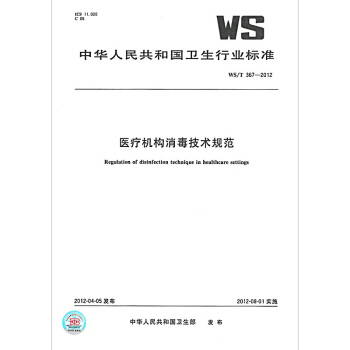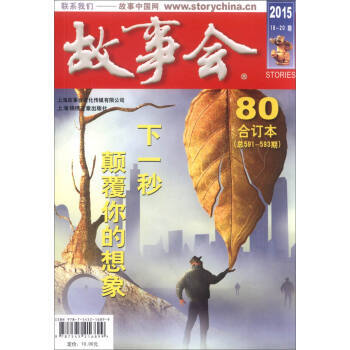具體描述
內容介紹
《居住區環境景觀設計導則(2006版)》(第一版)
著 譯 者: 建設部住宅産業化促進中心
齣 版 社: 建築工業齣版社
齣版時間: 2006-01-01
版 次: 第一版
上網時間: 2006-01-25
標準書號: 15112·11962
徵 訂 號: 11962
頁 數: 76
開 本: 32開
裝 幀: 平裝
本站分類: G30 園林景觀 >>> 環境藝術設計
實體書 定 價: 10.0 元
內容提要
本導則是為瞭貫徹科學發展觀,適應全麵建設小康社會的發展,滿足21世紀居住生活水平日益提高的要求,迅速提升我國居住區環境景觀設計及建造水平而編製的。旨在指導設計單位和開發單位的技術人員正確掌握居住區環境景觀設計的理念、原則和方法。通過導則的實施讓廣大城鄉居民在更舒適、更優美、更健康的環境中安居樂業,並為我國的相關規範的製定創造條件。本導則共分13部分,分彆是:總則、住區環境的綜閤營造、景觀設計分類、綠化種植景觀、道路景觀、場所景觀、硬質景觀、水景景觀、庇護性景觀、模擬化景觀、高視點景觀、照明景觀、景觀綠化種植植物分類選用錶。
讀者對象
本書適用於設計單位、開發單位的景觀設計人員、管理人員、策劃人員等,大專院校相關專業師生學習參考。
圖書目錄
1 總則;2 住區環境的綜閤營造;3 景觀設計分類;4 綠化種植景觀;5 道路景觀;6 場所景觀;7 硬質景觀;8 水景景觀;9 庇護性景觀;10 模擬化景觀;11 高視點景觀;12 照明景觀;13 景觀綠化種植植物分類選用錶。參考文獻。
暫時沒有目錄,請見諒!
《 urban Oases: A Guide to Designing Livable and Sustainable Neighborhood Landscapes 》 In the heart of every thriving community lies its green spaces – the parks, plazas, streetscapes, and private gardens that define the character and quality of urban life. This comprehensive guide delves into the art and science of creating neighborhood landscapes that are not merely decorative, but functional, sustainable, and deeply rooted in the needs and aspirations of their residents. This book is a celebration of the transformative power of thoughtful landscape design. It recognizes that our immediate environment shapes our well-being, fosters social connection, and plays a crucial role in the ecological health of our cities. Rather than focusing on grand, monumental gestures, we turn our attention to the intimate scale of the neighborhood, where design decisions have a tangible and immediate impact on daily life. Part I: The Foundations of Livable Landscapes We begin by laying the groundwork, exploring the fundamental principles that underpin successful neighborhood landscape design. This section emphasizes a deep understanding of place, encouraging designers to move beyond generic solutions and instead to respond to the unique context of each neighborhood. We examine: Understanding Place: This involves a thorough analysis of existing site conditions, including topography, hydrology, microclimates, and soil types. More importantly, it requires an immersion into the social and cultural fabric of the neighborhood. What are the existing patterns of use? What are the community's priorities and concerns? What historical or cultural narratives are embedded in the landscape? By understanding the soul of a place, we can design landscapes that feel authentic and beloved. Human-Centric Design: At its core, landscape design for neighborhoods is about people. This section explores how to create spaces that are accessible, comfortable, and inviting for all ages and abilities. We discuss the importance of designing for diverse user needs, from providing safe play areas for children to creating quiet, contemplative spaces for seniors. Concepts like "eyes on the street" and the creation of informal gathering spots are explored to foster a sense of community ownership and safety. Ecological Resilience: In an era of increasing environmental challenges, sustainable design is no longer an option, but a necessity. We delve into strategies for creating landscapes that are resilient to climate change, conserve water, and enhance biodiversity. This includes principles of native planting, permeable paving, rainwater harvesting, and the creation of urban habitats. The goal is to weave ecological functions seamlessly into the aesthetic and social fabric of the neighborhood. Part II: Elements of Neighborhood Landscape Design With a solid understanding of foundational principles, we move to the tangible elements that shape our neighborhood environments. This section provides practical guidance and inspiration for designing various public and semi-public spaces: Streetscapes that Connect: Streets are more than just conduits for traffic; they are vital public spaces that define neighborhood character. We explore how to design streetscapes that prioritize pedestrians and cyclists, incorporate generous tree canopies for shade and air quality, and create welcoming entries to homes and businesses. This includes strategies for managing stormwater at the street level, using durable and attractive materials, and integrating public art and amenities. Pocket Parks and Community Gardens: In dense urban areas, even small green spaces can have a profound impact. This section details the design of intimate parks, plazas, and community gardens that serve as vital social and ecological hubs. We discuss the importance of flexible design to accommodate a variety of activities, from passive recreation to active community engagement. The role of community gardens in fostering food security and social cohesion is also explored in detail. Private Realms, Public Faces: The design of private gardens and yards significantly contributes to the overall aesthetic and livability of a neighborhood. This section offers guidance on how to create private spaces that are both functional and visually pleasing, while also considering their contribution to the public realm. This might include strategies for attractive and effective fencing, front yard landscaping that complements streetscape design, and the integration of sustainable practices into residential gardens. Water in the Landscape: Water is an essential element, both for ecological health and human enjoyment. We explore innovative approaches to integrating water features and managing stormwater within neighborhood landscapes. This includes the design of bioswales, rain gardens, and other green infrastructure solutions that not only manage water effectively but also enhance the beauty and biodiversity of the urban environment. Part III: Cultivating Sustainable and Thriving Neighborhoods The final section looks beyond the initial design and construction, focusing on the long-term stewardship and evolution of neighborhood landscapes. Maintenance and Management: A beautifully designed landscape is only as good as its maintenance. This section addresses the practicalities of long-term care, emphasizing strategies for sustainable maintenance practices that minimize resource use and promote ecological health. We explore the importance of community involvement in stewardship and the development of effective maintenance plans. Community Engagement and Participation: The most successful neighborhood landscapes are those that are embraced and cared for by the community. This section highlights the critical role of engaging residents in the design and stewardship process. We discuss methods for gathering input, fostering a sense of ownership, and building consensus to ensure that landscapes meet the evolving needs of the community. The Future of Urban Greenery: We conclude by looking ahead, exploring emerging trends and innovative approaches in neighborhood landscape design. This includes the integration of smart technologies, the design for climate adaptation, and the ongoing effort to create more equitable and inclusive green spaces for all urban dwellers. This guide is an invitation to envision and create neighborhood landscapes that are not just built, but nurtured. It is a call to action for designers, planners, community leaders, and residents alike to collaboratively shape urban oases that foster well-being, resilience, and a profound sense of belonging.






















